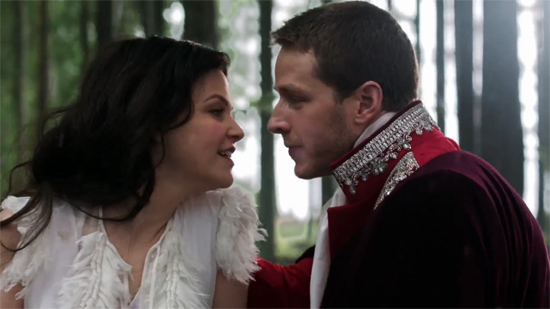Submitted by Scott Garbacz on Tue, 02/24/2015 - 14:25
 Image screen captured from abc.go.com.
Image screen captured from abc.go.com.
Fantasy is in vogue these days; even sometimes finding its way to the fashion runway. Admittedly, its big-screen run is nearing the end. The decade-long Harry Potter series came to an end in 2011, while the latest Hobbit movie marks the end of Peter Jackson’s The Lord of the Rings decade (extended cut, 2001-2014). Yet while big-budget blockbusters has been taken over by superhero movies or science-fiction dystopias, 2011 saw the advent of two small-screen franchises: the HBO epic fantasy series Game of Thrones and the network hit that is currently Netflix’s second most popular show, the fairy-tale drama Once Upon a Time. Game of Thrones, of course, has been the subject of many academic discussions and controversies; here, it has already been covered excellently on this site from the perspective of visual narrative theory, internet-enabled reader-response “marginalia," and even the tradition of opening films and television episodes with horses, and has had an excellent write-up of the ways its fashion stages culturally situated arguments about gender. Expanding upon Deb's comment yesterday that costumes are always making an argument, I want to look at the way that Once Upon a Time uses costumes to navigate the tension between our sense of the vibrancy of our present day lives and our collective desires for the past, especially as filtered through the lens of childhood memories.
Read more about Fashioning Modernity in Once's Urban Fairy-Tale